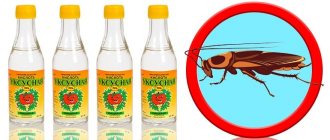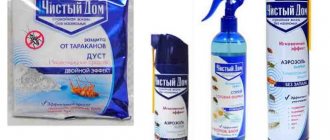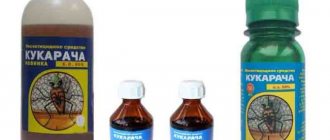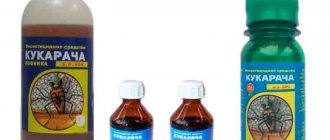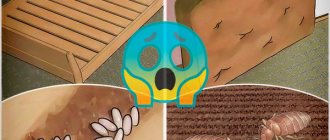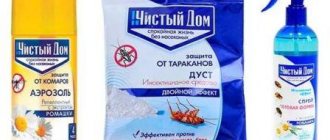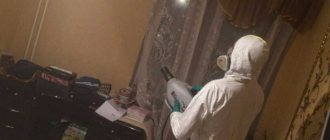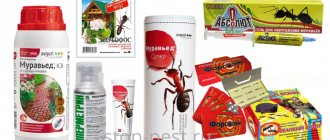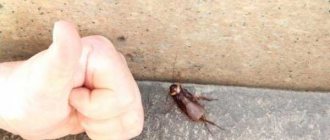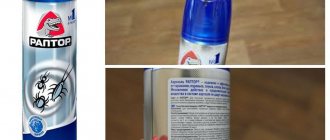A folk remedy is kerosene as a remedy against bedbugs. Tips and recommendations for use at home. The effect of kerosene on the bug. Effective against larvae. Security measures. Advantages and disadvantages of using kerosene at home.
When bedbugs appear in an apartment, country house or cottage, every owner wants to get rid of them as quickly as possible. Of course, such a neighborhood causes a lot of trouble and you can forget about a quiet life. Regarding specialized products, manufacturers provide us with a huge selection. But not everyone is in a hurry to use chemicals, preferring traditional methods of struggle. One of the folk remedies that is very popular is kerosene against bedbugs. How effective it is, its advantages, features and possible disadvantages, we will consider in detail.
How does kerosene affect bedbugs?
Many people are familiar with such a folk pest control method as kerosene for bedbugs. Reviews about it are mostly positive, but it should be remembered that this chemical helps, if necessary, to expel, and not completely destroy, insects in the room. And the effect is possible only with a slight infestation of parasites.
According to statistics, this technique works well when fighting a small number of bedbugs, when the presence of several individuals is noted. But does kerosene help against bedbugs when there is a significant accumulation of them? The answer is often negative, since its qualities and properties are not sufficient to destroy a large number of adult individuals, as well as the eggs they lay.
Before answering the question of whether bedbugs can be removed with kerosene, you should understand how the chemical works. Kerosene against bedbugs at home makes it possible to get rid of insects at the initial stage of their reproduction.
The mechanism of action when using this product is quite simple. The chemical reagent acts on the respiratory system of insects by penetrating their spiracles, which are located throughout the body and are thin villi. Particles of the substance form an impenetrable film, which leads to suffocation and death of pests. When fighting against bedbugs, it should be taken into account that a positive result will be achieved only if the entire body of the bug is covered with the substance, otherwise it will survive.
Is it possible to treat residential areas with kerosene? By spraying the surfaces of places where bedbugs have been observed with the preparation, only a temporary effect can be achieved. However, if there is no food after some time, the pests may return. Therefore, this method only helps if many conditions are met for the complete destruction of blood-sucking insects. Whether the parasite will be completely destroyed and not temporarily expelled from the premises depends on the correct use of the drug in question.
Efficiency of application
It is difficult to remove insects from your home using traditional methods alone. But they have an additional effect in combination with other means. Finding where bed bugs are hiding is a major factor in the process of exterminating them.
It is important to inspect all objects where pests most often hide. During disinfestation, carefully treat everything separately. After the procedure, put the bed linen in the wash at a temperature of 90 degrees.
Kerosene helps against bedbugs only if the parasites have recently appeared in the room and have not had time to multiply significantly. The more of them there are, the less opportunity there is to get rid of them on your own.
This method does not always lead to the desired effect. Another problem may occur - the spread of insects over an even larger area. In addition, this liquid is highly flammable. When processing a room, a fire hazard is created.
Kerosene in the fight against bedbugs
Kerosene is a well-known remedy for fighting bedbugs. This is a mixture of carbons and a fraction of oil, used as fuel and for some domestic needs. There are kerosene with higher or lower flash point, density and percentage of other substances, for example, sulfur.
Thus, we can distinguish kerosene used as fuel for jet engines, for tractors and other agricultural units, used in mines for lighting, as well as household kerosene for kerosene lamps, stoves and other small appliances.
In the latter case, they talk about so-called light kerosene. This type is most often used for pest control.
How do bedbugs appear in an apartment?
Like cockroaches, bedbugs mainly appear in an apartment from neighbors. You can also bring insects with you from public transport or pick them up, for example, while visiting. You can also buy bedbugs along with a new sofa in a store or get them with your luggage on the train.
I have already talked about how to properly protect an apartment from neighboring insects in an article about baiting cockroaches.
Bedbugs are much slower than cockroaches and move a maximum of 2-3 meters per day. Sometimes it takes them a week to move from apartment to apartment. But the bug is much faster and more insidious at short distances: it can jump sharply if it is in danger.
The sanitary condition of the apartment does not play a role in the reproduction of bedbugs. They settle equally well in clean and dirty housing, as long as they have access to human blood. But they multiply quickly. A female bedbug lays 500 eggs per year.
House bugs are active mainly at night - from 3 to 5 o'clock
Bedbugs are extremely unpleasant and destructive neighbors. To find them, you have to move furniture, remove baseboards, and sometimes tear off drywall. Bed linen and mattresses can be safely thrown away after a bedbug infestation: washing and drying are allowed, but it is better to take more drastic measures.
Bedbugs like to be close to people, not their food. Typical habitats are next to the bed or sofa. It could also be a ceiling plinth. From there, the bugs fall on the person and bite him. The bug bite is not felt: before the attack, the insect uses an anesthetic liquid. For this reason, bedbugs are often not noticed in time.
If there is a child in the house, bedbugs will interfere with his sleep. Adults also feel stings after the numbing liquid wears off.
Bedbugs also have the property of falling into suspended animation, that is, hibernation. If they have nothing to eat, they seem to fall asleep. Therefore, it is useless to kill bedbugs by simply leaving the apartment empty.
Habitats of bedbugs. Source: Sidekix Media / Unsplash
How not to harm human health
Kerosene has a toxic effect on the body. When using it, you should be extremely careful - otherwise you can not only remove bedbugs, but also cause harm to human health.
Inhalation of its vapors for a long time may result in narcotic intoxication, dizziness, headache, and possible fainting. Due to intoxication of the body, the liver suffers.
In contact with the skin and mucous membranes, the substance causes severe irritation and allergic reactions.
To avoid negative consequences, you must adhere to the following rules:
- cover the skin with clothing (long sleeves, pants), special means (rubber gloves);
- when processing, wear a respirator to protect the respiratory tract;
- if kerosene gets on your skin or mucous membranes, immediately rinse these areas with water;
- if accidentally swallowed, induce vomiting, drink activated charcoal, see a doctor;
- When using kerosene indoors, windows must be open.
If you feel unwell, you need to go out into the fresh air. Treatment should only be carried out in the absence of other residents of the apartment. Kerosene and its vapors are highly flammable; it is especially important to follow fire safety rules.
You must not turn on the gas stove, smoke, light matches or other sources of fire. The product is applied only to hard surfaces and is not at all suitable for treating textile products.
After the procedure, the room should be well ventilated. After 1-2 days, wash everything thoroughly.
Security measures
Many people know that kerosene is not a completely safe substance. It is poisonous, and working with it requires special attention and safety precautions.
If the premises are to be treated, be sure to follow the following recommendations:
- Any procedures performed with the substance must be carried out in a respirator, which will prevent toxic fumes from entering the body through the respiratory tract.
- You must use safety glasses to protect your eyes. If the insecticide gets on the mucous membrane, rinse it with plenty of water as quickly as possible.
- During the work, all sorts of situations are possible; if suddenly this drug gets into the digestive system, measures must be taken immediately. We drink a large amount of water, about 3 glasses, to induce vomiting, then go to the hospital.
- When processing, the room should be well ventilated to prevent the accumulation of toxic fumes.
- There should be no flames in the room, since the product is flammable and highly flammable.
As practice shows, proper use of the substance ensures safety. In addition, many years of practice have proven that it is effective and brings good results as a means of exterminating adult individuals, destroying larvae and, of course, a preventive effect.
Rules for use at home
- You need to work with it in pants, a long-sleeved jacket and always rubber gloves, this will protect your skin;
- To protect the respiratory tract we use a respirator;
- In case of contact with the skin or mucous membrane, rinse with plenty of water;
- If it enters the gastrointestinal tract, be sure to induce vomiting; to do this, drink a large amount of water at a time, then you need to take activated charcoal and consult a doctor;
- Make sure that the windows in the room where the procedure is being carried out are open; if you feel unwell, you should immediately go out into the fresh air;
- When processing is carried out, there should be no strangers in the room, only the person doing the work, and there should be no animals;
- At all stages, comply with fire safety measures, you cannot smoke, light matches, turn on the gas stove and exclude any sources of fire;
- The product is not intended for treating textile items, firstly, the products may lose their appearance, and secondly, they absorb odors which will be very difficult to get rid of;
- The apartment should be well ventilated, and wet cleaning can only be done after 2 days.
How to use kerosene against bedbugs
Kerosene against bedbugs will only be effective if it is used correctly. Since bedbugs are miniature in size, they are able to hide in the smallest crevices, which become favorite habitats for parasites. Therefore, treating the premises is not limited to formally spraying the floor and contaminated furniture with kerosene. Pour liquid into each crack and treat the space between the baseboards and walls.
Kerosene has a specific smell. Therefore, not everyone prefers to use it in its pure form. There are different options for preparing kerosene-based emulsions against bedbugs. We will look at 4 options that are used most often.
- Mix kerosene and ethyl alcohol in equal quantities. Add naphthalene or camphor oil at the rate of 7 grams per 200 ml of liquid. After treatment, the room should be ventilated.
- Mix kerosene, laundry soap, and naphthalene in a ratio of 5:4:1. The emulsion is ready for use.
- A popular remedy for fighting bedbugs is an emulsion consisting of kerosene, turpentine and naphthalene, which we take at a ratio of 7.5: 2: 0.5.
- You can use an emulsion consisting of 9 parts kerosene and 1 part tobacco dust. But this product cannot be used immediately after preparation. It should sit for 48 hours. Then, the composition is filtered.
Any of these remedies helps get rid of harmful insects that cause a lot of inconvenience. After treatment, ventilate the room and do general cleaning. Surfaces treated with emulsions should be washed with a saline solution.
It is advisable to treat the room at least 2 times. During the first treatment, some insects hide in air vents, sewer pipes, etc. Some parasites may not have received the emulsion in sufficient quantity or not. To destroy the parasite, it must be doused entirely, which is not always possible. If not all spiracles are covered with an airtight film, the insect will survive. Therefore, you should repeat the procedure after 2-3 days, even if you do not find surviving bedbugs.
Separately, it should be said about upholstered furniture, which is a favorite habitat for bedbugs. It is not advisable to pour any emulsions on a sofa or soft chairs that contain kerosene. It is very difficult to get rid of the pungent odor later. It is advisable to use insecticides that are odorless when treating upholstered furniture.
Options for using kerosene
It is worth saying that these folk methods have been used for a long time and have managed to prove their effectiveness. Now there are several options for using this substance, so everyone can choose the one that is most convenient.
Most popular uses:
- This option involves using the product in its pure form. To do this, purchase kerosene and use it to treat surfaces. To make the application procedure as easy and convenient as possible, a spray bottle is used.
- For the second method, you will need to prepare a mixture. We need 100 g of kerosene, a naphthalene tablet (5 g), 50 ml. creosole. All components must be thoroughly mixed to obtain a homogeneous mixture. Then the surfaces are treated with this solution. The procedure is carried out once a month, repeated until the pests completely disappear.
- You will need to prepare a solution, for this we take 1 part turpentine, 2 parts kerosene. Pour warm water into a separate container and dilute 4 parts of green soap in it. Then mix all the ingredients well. Carefully treat the room with this solution every day until the parasites disappear. After a month, it is necessary to carry out prophylaxis.
- For this recipe you will need: turpentine - 12 parts, kerosene - 6 parts, denatured alcohol - 3 parts. Mix this mixture well and add 1 part of naphthalene. The solution is ready for use; surfaces where bedbug colonies and possible habitats live are treated.
How to use it correctly?
The help from using this remedy will be complete if the fight is carried out according to all the rules. The main thing is to choose the most effective method for each situation.
There are several methods to quickly get rid of bedbugs at home:
- Spraying with a clean solution is the most effective solution, since when sprayed, the bloodsucker's body is completely covered with a chemical reagent. This treatment is carried out behind the radiators, near cracks in the floor and walls. Is it possible to treat a room with kerosene and expect it to be cleared of unexpected guests for a long time? It all depends on the regularity of spraying and the persistence of insects.
- Turpentine and kerosene - after spraying a solution prepared from 12 parts of turpentine and 6 parts of kerosene (you can add 3 parts of denatured alcohol), the apartment becomes intolerable to bedbugs, and they quickly leave it.
- Kerosene mixed with mothballs will also repel insects. Treatment is carried out after mixing 100 g of kerosene and 5 g of naphthalene by lubricating all surfaces in the room. The heavy odor repels adults and helps them escape indoors. However, this method is lengthy and does not guarantee complete elimination of the problem, since the chemicals gradually erode and the bedbugs may return.
- A good repellent option in the form of mixing green soap and kerosene prevents the active reproduction of the parasite, but does not kill bedbugs. Surfaces should be lubricated regularly.
You can use the above methods yourself. But as practice shows, it is easier to prevent such an unpleasant phenomenon as close proximity to blood-sucking insects than to get rid of them later. Prevention will help avoid negative impacts on human health. Since kerosene, being an active chemical, has a negative effect on well-being and general condition.
Bugs and kerosene
The negative reaction of insect pests to kerosene has been known since its invention in the 19th century. Kerosene was first used to wash hair and get rid of lice. Almost immediately we learned to use kerosene against bed bugs.
Kerosene destroys bedbugs in the following way: penetrating the respiratory tract, causing burns and death of the parasite. In addition, kerosene repels insects from reappearing. Thus, kerosene against bedbugs is a remedy with scientifically proven effectiveness.
Disadvantages of using kerosene against bedbugs
And at the same time, kerosene against bedbugs at home as a method has significant disadvantages:
- A fairly persistent unpleasant odor that will remain in the room for some time even after disinfestation;
- This is a flammable substance, which means that the likelihood of a fire indoors when used, especially in the kitchen, when smoking or in the vicinity of switched on electrical appliances, increases many times;
- It is also unsafe to store kerosene at home for the reason stated above;
- It is also toxic to humans, which means its use in families with children is not advisable; in addition, its use in areas where patients are located is excluded;
- It is better not to use kerosene for people with respiratory diseases.
An old “familiar” – kerosene
Kerosene began to be used to combat bedbugs almost a century and a half ago - literally from the moment of its appearance. It is kerosene, an oily yellowish liquid with a specific odor. It belongs to the flammable hydrocarbons, boiling at a temperature of 150 degrees. Kerosene is obtained from oil distillation.
Kerosene was first registered in 1854. In those days, it was even sold in pharmacies as a medicine. And despite the fact that kerosene, like all liquid long hydrocarbons, is poisonous, it was actually used for medicinal purposes. And they still use it. But, as a toxic substance, it was also successfully used to bait parasitic insects.
How does kerosene act on parasites?
Kerosene does not depress the nervous system, but acts as a poison on the parasite. The bug's body has a large number of spiracles through which it breathes. Kerosene covers the insect's body with an oily film, thereby blocking access to oxygen. The bug, unable to breathe, soon dies.
For those insects that have not been exposed to kerosene, its smell has a frightening effect. This encourages them to leave the room in search of a place where there is no “aroma” of kerosene.
Operating principle
Once on the surface of the body, kerosene envelops the body of the bug with an oily film. It closes the spiracles through which the parasite exchanges gases with the environment due to which the insect cannot breathe and suffocates. Kerosene against bedbugs begins to act instantly after spraying.
In addition, part of the product may get inside the parasite, which will cause poisoning of the body. Severe intoxication will cause the death of the insect.
Conclusions: all the pros and cons
Kerosene against bedbugs is only effective in cases where the population is small. If there are a lot of them, it is almost impossible to rid your home of parasites on your own. This may lead them to find new habitats. Despite its advantages, kerosene has many disadvantages, which also need to be taken into account. In this regard, it is better to seek help from specialists who will rid your home of blood-sucking parasites effectively and without harming the health of those living in an apartment or private house.
Advantages and disadvantages
Of course, there is simply no ideal insecticide; each can offer its own advantages, but each also has disadvantages. Therefore, before deciding in favor of this method, you need to weigh all the pros and cons.
Advantages:
- Availability and low price. You can buy it anywhere, and the low price will please anyone.
- Efficiency. This is an absolute advantage that has been proven in practice. In addition, it can kill larvae, which significantly increases its effectiveness.
- Use at home. No special skills or training required.
Flaws:
- The procedure must be carried out several times, this is the only way to achieve a positive result.
- Of course, the flammability of the product is considered a disadvantage, so any work with it requires maximum care.
- This is a toxic liquid and upon contact with skin, allergic reactions are possible; the vapors are also poisonous and cause poisoning if they enter the respiratory tract.
- If the room is poorly ventilated, then in addition to an unpleasant odor, headaches may appear, which indicates that harmful fumes are entering the body.
It is worth paying attention to one more point. Efficiency is achieved only through direct contact of the insect and the oil product. Regarding the smell, bedbugs are absolutely indifferent to it; moreover, they get used to it very well and the “aroma” does not bring any positive effect. Therefore, treatment must be carried out taking into account these points, because individuals who simply retreated to a safe distance will definitely return after time.
Pros and cons of the method
Before poisoning bedbugs with kerosene, you should learn about the advantages of the method and the possible side effects. The advantage of its use should be considered its relative cheapness and the ability to independently carry out the prevention of active reproduction of insects.
However, are bedbugs so afraid of kerosene that they leave the premises forever? In the absence of direct contact with the oil product on the entire surface of the bug's body, the insect is highly likely to return after treatment is completed. The pest is not too afraid of the heavy chemical odor, it is able to adapt to it, and if the chemical vapors are inhaled for a long time, the person doing the treatment can be poisoned.
Also, the disadvantages of the method should be considered:
- The need to carry out treatment for a long time - only in this case is the removal of insects guaranteed for a long time.
- Fire hazard – kerosene is a highly flammable substance; if fire regulations are not followed, there is a possibility of it igniting.
- The liquid is toxic and can cause allergic reactions if it comes into contact with the skin for a long time.
- Prolonged persistence of a heavy odor in the room, which can cause headaches and even poison the body.
To decide how to remove bedbugs and not be afraid of their return, you should analyze the pros and cons of using a folk recipe. Or the possibility of using more modern insecticides.
Reviews from people after use
Analyzing the opinions of those who have already used kerosene to eliminate bedbugs will help evaluate its effectiveness.
Thus, Alena from Yekaterinburg speaks of the high degree of negative impact of a mixture of turpentine and kerosene on the respiratory system:
After two weeks of using this mixture, a cough and chest pain occurred. I had to abandon this method and contact the Sanitary and Epidemiological Station. The result is complete elimination of insects from premises quickly and without harm to health.
Galina from Moscow also talks about the possible consequences of using a folk remedy:
Even long-term spraying of places where parasites accumulated over two months did not give the expected result. The bedbugs became less active, and after the end of use they began to appear again.
Sergei from Saratov notes that:
Pure kerosene helps, but cough and nasal congestion arose in all family members during the process of self-disinfestation. The result was the use of a ready-made professional product: the insecticide, which was used by SES employees, coped with the problem, eliminating the insects forever.
Processing rules
Kerosene can be used to treat wooden, metal and plastic surfaces. They can be used to wipe furniture, floors, baseboards, and the backs of paintings.
Kerosene cannot destroy eggs - due to the fact that it affects the respiratory system
But you should not treat textiles with kerosene - mattresses, upholstered furniture, blankets. After this, the textiles will be almost impossible to wash.
Kerosene compared to other methods
Unfortunately, when using kerosene it is often necessary to re-treat insects. The question of whether kerosene helps against bedbugs can be answered in the affirmative only in one case - if the substance covers almost the entire body of the insect.
To eliminate a large number of treatments, it is recommended to collect individual bedbugs and also drown them in kerosene. And at the same time, the remedy is powerless against the eggs of these insects.
Reviews about the use of kerosene against bedbugs are not always positive, since the explosive nature of the substance, the unpleasant odor, the inability to treat bed linen and other textiles, as well as the toxic effect on humans do not make it the best means of combating parasites. However, availability and inexpensive price make it necessary to turn to it in some cases in our time.
Essential oils
Essential oils are used to combat bedbugs. Such products repel pests due to their specific aroma and affect the nervous system of parasites.
Thyme, mint, lavender, clove, and eucalyptus oils are better suited. You can leave 2-3 drops around the perimeter of the rooms, near beds and sofas.
Essential oils are mixed with clean water - 1 tsp. per 100-200 ml of liquid. Then spray from a spray bottle around the room, over bedding and furniture.
You will have to repeat the procedure periodically. You can use more than one oil, but mix it in different combinations with the same parts.
Cedar oil works well. It repels insects and is used to treat bite sites. The product relieves itching, burning, swelling, redness, and accelerates healing.
Lavender oil is used for preventive purposes when traveling. The corners of suitcases are moistened with it to prevent bedbugs from being brought home from hotels and other places.
Remedy #6: Tea Tree Oil
House parasites cannot tolerate strong odors. Camphor oil can scare them away. For a more lasting effect, it is better to prepare a mixture of equal amounts of this oil and turpentine ointment. Coat the legs, all elements of furniture, beds, baseboards, areas behind the furniture, under the window sill, and heating radiators with the resulting composition.
It is important to treat the bottom of the mattress. This method will repel bed bugs. The disadvantage is the unpleasant odor, which will need to be removed by careful ventilation.
Tea tree oil is an effective folk remedy. It is used as an additional preventive method of repelling bed bugs.
First, high-quality treatment against domestic parasites is carried out. But in the future, according to all instructions, it is recommended to regularly carry out such treatments for preventive purposes. To do this, it will be enough to use tea tree oil. You will need to wash all your clothes and bedding using this product.
Furniture and floors should also be treated with oil. For every 500 ml of water add 18 drops of the product. Spray the solution on all objects in the room, even lamps and carpets. To increase effectiveness, you can diffuse tea tree oil every day.
Remedy #1: Vinegar
A popular remedy for night parasites is vinegar. It should be remembered that it does not kill, but only repels insects. Used as a preventive measure. You can coat the penetration areas of bed bugs with a vinegar solution. The disadvantages of the method are a specific smell, the need for constant repetition, as the smell disappears.
It is better to use vinegar with other means, for example, mothballs. If you mix vinegar, alcohol (90%), naphthalene in equal parts, and spray it on the bedbugs from a spray bottle, the effect will be positive.
We suggest you familiarize yourself with Wormwood for bedbugs - how to use it and whether it helps
Damage caused by bedbugs
Bedbugs bite painlessly. In the morning, you can find numerous swollen red spots on the body with swelling and a lump in the middle, which cause itching. They are often confused with allergies, dermatitis, mosquito bites and other insects.
Bedbug bites differ in that the wounds are arranged in the form of a path with a distance of 2-5 cm. This is due to the fact that one bug makes several consecutive punctures in order to drink blood. If there are a lot of bedbugs, then many tracks appear on the body.
The harm caused by bedbugs depends on the individual characteristics of a person, and can manifest itself in the form of:
- Itching and allergies;
- Quincke's edema, fever and even anaphylactic shock, in case of a serious allergic reaction;
- Sleep and mental disorders;
- Scratching wounds can spread any infection.
Thus, it is imperative to fight bedbugs, and it is better to use a combination of means.
Symptoms of a parasitic infection
A variety of symptoms can indicate the presence of parasites in the human body.
Most often, the patient’s metabolism is disrupted, the immune system fails, and an allergic reaction in the form of a rash can be observed on the skin.
The following signs may also indicate infection:
- Loose stools, frequent diarrhea, abdominal pain;
- Muscle and joint pain;
- A sharp decrease or increase in weight;
- Depressive state, feeling of weakness and chronic fatigue;
- A person often suffers from colds;
- Blood pressure constantly fluctuates;
- The whites of the eyes acquire a yellowish tint;
- The patient grinds his teeth in his sleep.
